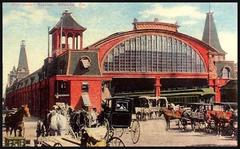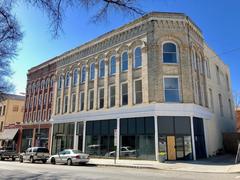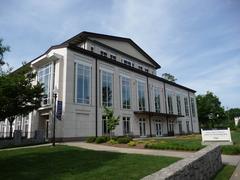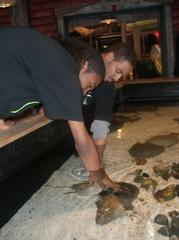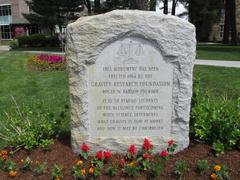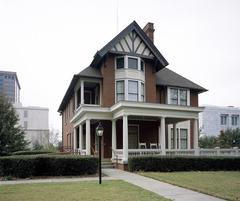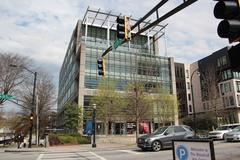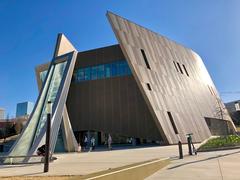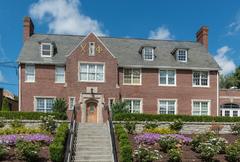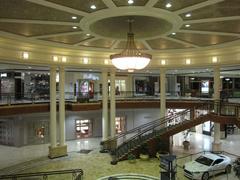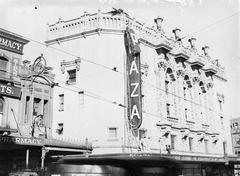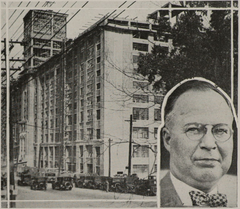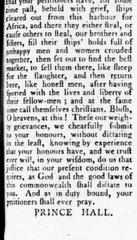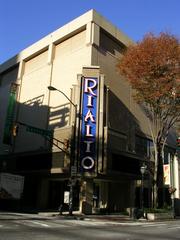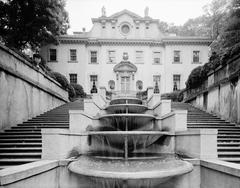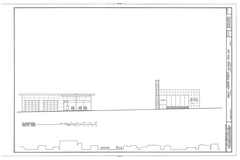Lanier University Visiting Hours, Tickets, and Historical Sites in Atlanta
Date: 04/07/2025
Introduction
Lanier University, nestled in the historic neighborhoods of Atlanta, Georgia, is a site of significant educational ambition, striking architectural design, and complex social history. Founded in 1917 and named after Georgia poet Sidney Lanier, this former Baptist liberal arts college embodies early 20th-century efforts to promote intellectual and cultural growth in the American South. Its surviving buildings—particularly the Tudor-Gothic Lanier University Building and the Greek Revival Arlington Hall—stand as lasting reminders of Atlanta’s evolving urban landscape and educational heritage.
Though Lanier University operated for only a few years and faced controversies—including a period of Ku Klux Klan ownership—its pioneering co-educational and flexible learning models anticipated later educational trends. Today, while the university is no longer active, its remaining structures and their neighborhoods invite exploration and reflection. This guide provides a comprehensive overview of Lanier University’s history, architectural highlights, visiting information, accessibility, nearby attractions, and resources for further exploration. For more context, see the New Georgia Encyclopedia, Lost Colleges, and the Atlanta History Center.
Table of Contents
- Historical Overview of Lanier University
- Architectural Highlights and Campus Layout
- Visiting Lanier University: Hours, Tickets, and Tips
- Nearby Attractions
- Frequently Asked Questions (FAQs)
- Additional Resources and Further Exploration
- Plan Your Visit
- References
Historical Overview of Lanier University
Founding and Early History
Established in 1917 by Dr. Charles Lewis Fowler, a Baptist minister and educator, Lanier University was envisioned as a Christian liberal arts college to serve Atlanta’s growing population. The university was named after Sidney Lanier, a prominent Georgia poet and musician, symbolizing a commitment to Southern cultural heritage. The original campus was located in Druid Hills, designed in the Tudor-Gothic style, with the Lanier University Building as its centerpiece. The university opened with programs in the arts, sciences, and theology, and quickly earned a reputation for strong academics and moral instruction.
Significance in Atlanta’s Educational Landscape
Lanier University emerged during Atlanta’s transformation into a regional educational center. It joined a landscape of established institutions such as Emory University, Georgia Institute of Technology, and the city’s Historically Black Colleges and Universities (HBCUs) like Morehouse and Spelman Colleges. Lanier sought distinction through its Christian liberal arts curriculum and co-educational environment, providing flexible scheduling, night classes, and correspondence courses—innovations that addressed the needs of working students and anticipated later educational models (Lost Colleges).
Notable Events and Transformations
The university’s history is marked by a controversial episode in the early 1920s when the Ku Klux Klan, under William Joseph Simmons, acquired the campus to promote its ideology. This period led to national notoriety, declining enrollment, and the school’s closure in 1922. Afterward, the property became home to the Scottish Rite Hospital for Crippled Children and later Congregation Shearith Israel, a longstanding Atlanta synagogue. These subsequent uses reflect the site’s ongoing role in Atlanta’s community life (Vahi.org).
Legacy and Cultural Impact
Although its operation was brief, Lanier University’s legacy endures through its architectural landmarks and as a case study in the interplay of education, ideology, and social change in the South. Its commitment to accessible education and co-education foreshadowed future developments, while its associations with both cultural aspiration and exclusion provide important lessons for visitors and historians alike (dbpedia.org).
Architectural Highlights and Campus Layout
Lanier University Building
The Tudor-Gothic Lanier University Building is distinguished by its steeply pitched roofs, stonework, and arched windows. It remains a local landmark, now serving as Congregation Shearith Israel. The building’s exterior can be appreciated from University Drive NE and nearby streets.
Arlington Hall
Arlington Hall, designed by renowned architect A. Ten Eyck Brown, is a scaled replica of the Custis-Lee Mansion in Arlington, Virginia. With its Greek Revival portico, Ionic columns, and symmetrical wings, Arlington Hall embodies the ideals of enlightenment and classical learning. It stands as a rare example of Greek Revival architecture in a garden suburb and is a testament to the university’s ambitious, albeit short-lived, vision (New Georgia Encyclopedia).
Visiting Lanier University: Hours, Tickets, and Tips
Location and Access
- Lanier University Building: 1180 University Drive NE, Atlanta, GA 30306 (Druid Hills neighborhood).
- Arlington Hall: Located in the Morningside-Lenox Park neighborhood, accessible from public streets.
Both sites are easily reached by car or public transit (MARTA), and are near Emory University, Fernbank Museum, and other attractions.
Visiting Hours and Ticket Information
- Lanier University Building: Exterior viewing is available at any time. Interior access is generally restricted to worship services or special events by Congregation Shearith Israel.
- Arlington Hall: As a privately owned building, it does not have official visiting hours and is not open for interior tours. Exterior viewing is possible from public sidewalks.
There are no ticket requirements or admission fees for viewing either building’s exterior.
Guided Tours and Special Events
- No official Lanier University tours exist, but local historical societies and walking tour providers occasionally feature these buildings in their itineraries.
- Check with the Atlanta Preservation Center or the Society of Architectural Historians for special events or guided tour opportunities.
Accessibility and Parking
- Both neighborhoods are pedestrian-friendly.
- Street parking is available but may be limited during religious services or events.
- Public transportation (MARTA) serves the area, but driving or ride-sharing is often more convenient.
Nearby Attractions
- Emory University: Offers campus tours and the Michael C. Carlos Museum.
- Fernbank Museum of Natural History: Features engaging exhibits and an urban forest.
- Atlanta Botanical Garden: Renowned for its themed gardens and seasonal events.
- Piedmont Park: Atlanta’s premier green space for walking, recreation, and festivals.
- Swan House: Historic 1928 mansion at the Atlanta History Center (thetouristchecklist.com).
- Martin Luther King Jr. National Historical Park: Key site for understanding the city’s civil rights legacy (exploregeorgia.org).
Frequently Asked Questions (FAQs)
Can I enter the Lanier University Building or Arlington Hall?
Generally, both buildings are closed to the public except during special events or services. Exterior viewing is permitted.
Are there entrance fees or tickets?
No. Exterior viewing is free. Guided walking tours may charge a fee.
Is photography allowed?
Yes, for exteriors. Please respect privacy and do not photograph interiors without permission.
Are guided tours available?
Occasionally, through local historical societies or architectural tours.
Is the site accessible for people with disabilities?
Exterior sidewalks are accessible; contact tour organizers for specific accommodations.
Additional Resources and Further Exploration
- Atlanta History Center
- New Georgia Encyclopedia
- Lost Colleges
- Society of Architectural Historians
- Vahi.org
- dbpedia.org
Plan Your Visit
- Prepare: Research Lanier University’s history before your visit to enrich your experience.
- Timing: Visit during daylight hours, ideally in spring or fall for comfortable weather.
- Combine: Pair your visit with other Atlanta landmarks for a full day of exploration.
- Respect: Observe privacy and property boundaries in these residential areas.
- Stay Updated: Follow local historical organizations and use the Audiala app for alerts about events and tours.
References
- Atlanta History Center
- New Georgia Encyclopedia
- Lost Colleges
- dbpedia.org
- Vahi.org
- Society of Architectural Historians
- thetouristchecklist.com
- exploregeorgia.org
- discoveratlanta.com
Lanier University’s story is a microcosm of Atlanta’s broader history—marked by ambition, adversity, and transformation. While only remnants remain, the site invites visitors to contemplate its legacy and the city’s ongoing evolution. Enhance your visit by engaging with local resources, respecting the neighborhood, and exploring the remarkable history that continues to shape Atlanta.


